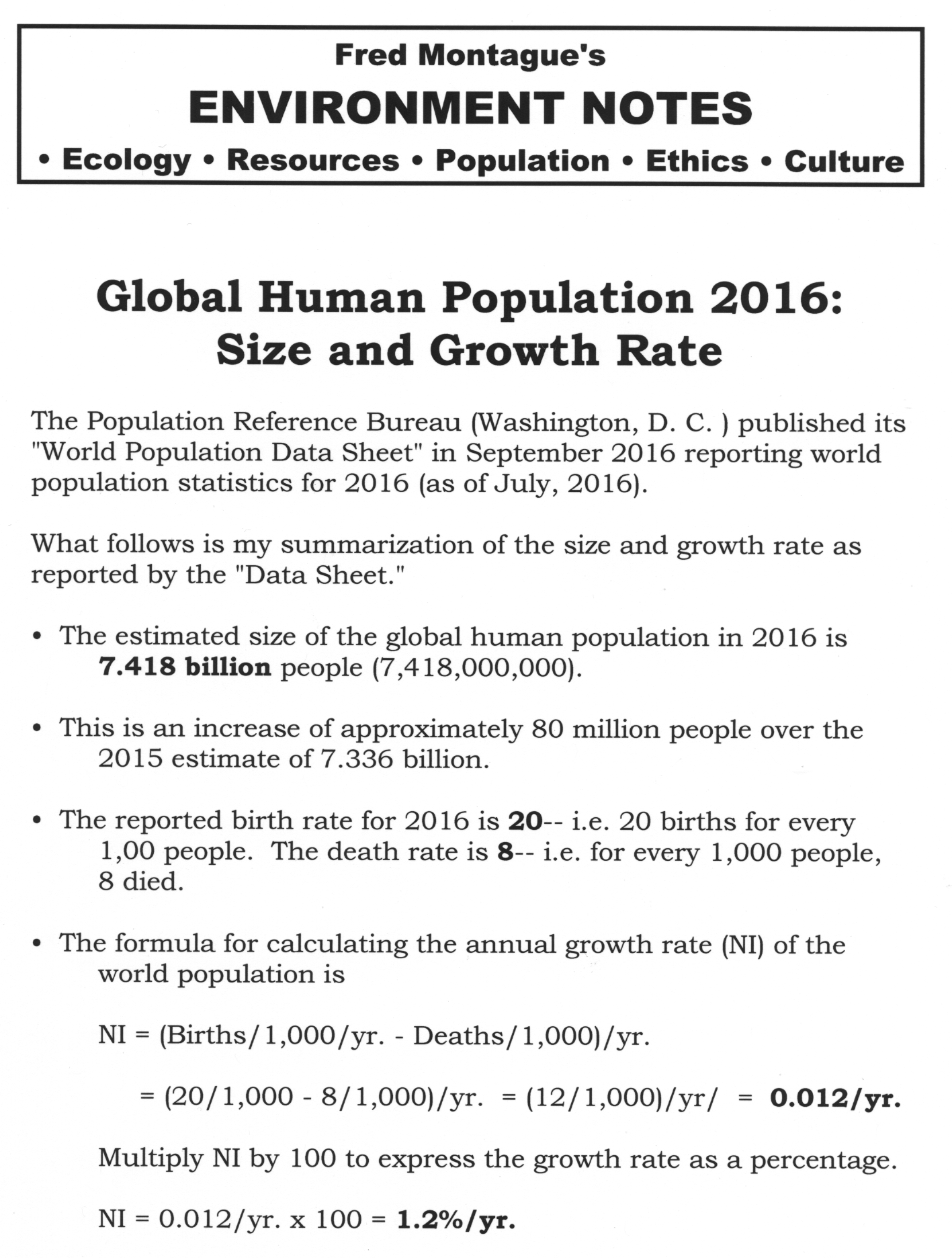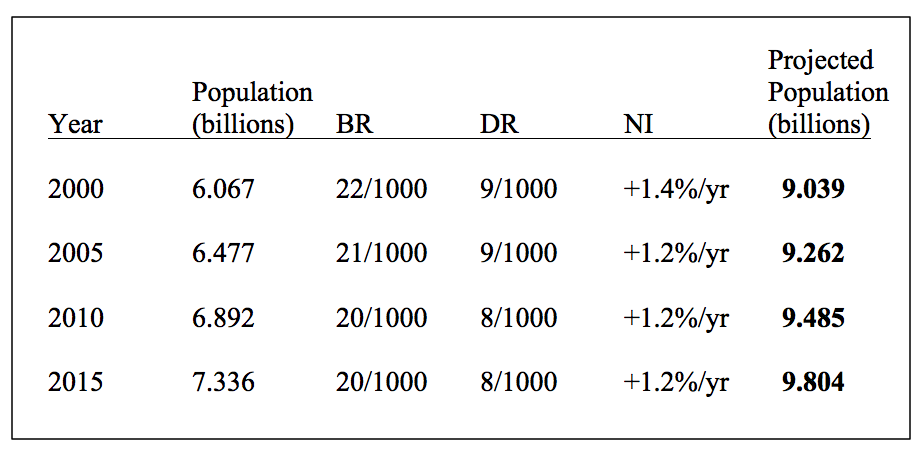This weekly blog post and its host website cover a wide variety of Fred Montague's environmental commentaries, gardening topics, and wildlife/art activities. Please browse the website and the blog archives for topics you are interested in.
This Week's Post: Global Human Population 2016: Size and Growth Rate
This weekly blog post and its host website cover a wide variety of Fred Montague's environmental commentaries, gardening topics, and wildlife/art activities. Please browse the website and the blog archives for topics you are interested in.
This week's post: 2050 Global Human Population Revised Upward--Again
This weekly blog post and its host website cover a wide variety of Fred Montague's environmental commentaries, gardening topics, and wildlife/art activities. Please browse the website and the blog archives for topics you are interested in.
2050 Global Human Population Revised Upward--Again
Each year at this time I view the Population Reference Bureau's annual "World Population Data Sheet."
Of particular interest to me is the trend over the past 15 years or more to increase the Bureau's projection for the size of the human population in 2050.
To keep things simple, the following table from the "Data Sheets" shows the projections for 2000, 2005, 2010, and 2015, in addition to four other important demographic statistics. (The intervening years fit the trend.)
Table Notes:
BR = birth rate (# of births per 1,000 people).
DR = death rate (# of deaths per 1,000 people).
NI = natural increase (growth rate of the population).
The just-published "2016 Data Sheet" projects the 2050 population to be 9.869 billion.
The PRB states: "the projected populations [are] based on reasonable assumptions of the course of fertility, mortality, and migration [relevant only for individual country projections]. Projections are based on official country projections, series issued by the U.N. or the U.S. Census Bureau or PRB publications.
Since 2000, these projections have been updated to show the potential addition of about 0.83 billion more people than the 2000 projection of 9 billion. If these projections are accurate, by 2050 there will be 2.4 billion more humans than today. This total population increase of nearly 32% will occur in the next 34 years.
Future posts will address some of the challenges and opportunities this unprecedented population phenomenon offers.
Environmental Commentary: Biological Diversity
The circular image below is from my handmade book One Earth. The current array of organisms on the planet, numbering about 2 million described species, is the product of more than 3 billion years of evolution. Scientists estimate there may be 5 million to 20 million total. Most of the undiscovered species are small organisms such as insects and microbes. Quantitatively speaking, most of life on Earth is undiscovered. We've found the easy, big beings. Unfortunately, many of those easy, big beings are declining in numbers as one particular species' population growth and resource demands continually increase and intensify.
Illustration from the artist book One Earth. © Fred Montague
Environmental Commentary: "Identify This Trend Line"
Unfortunately, this "trick question" is still generally relevant, even after 21 years.
FoxSense: Identify This Trend Line © Fred Montague






